Exhibitions
Modern Images of Ancient Clay Figures
Date
-Location
Special Exhibition Gallery (1st floor)
The image of Haniwa and Dogu excavated from ancient strata has permeated all over Japan, and they have now become established characters. Unearthed artifacts have generated cultural phenomena in various fields, ranging from arts and crafts to architecture, photography, film, theater, literature, traditional performing arts, thought, and even educational programs. The postwar episode of Okamoto Taro and Isamu Noguchi “discovering” the aesthetic value of excavated objects, which had previously been treated as archaeological materials, is now a legend. Why did unearthed objects attract attention only during a certain period of time? How did the evaluation of them spread? Why were artists so passionate about unearthed artifacts? With a focus on art, this exhibition traces from the Meiji period (1868–1912) to the present day the genealogy of “motifs of unearthed objects” that have leaped onto the stage of cultural history to examine the changing gaze directed toward Haniwa, Jomon potteries, and Dogu.
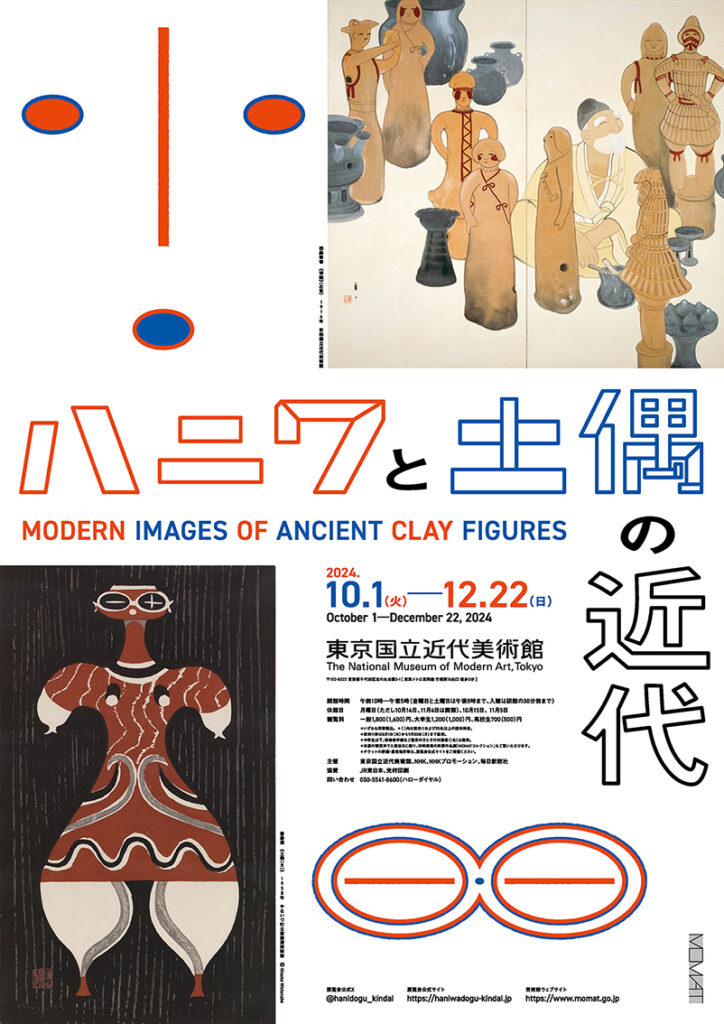
Highlights
1. Digging behind the scenes of the Haniwa and Dogu craze.
Everyone in Japan has surely encountered Haniwa and Dogu as a child and have become familiar with them. It was not long ago, in fact, that they appeared at the beginning of history textbooks, and it was not until the modern times that they came to be spoken of as “art.” This is an exhibition with a double treat in one, as you will be able to see behind the Haniwa and Dogu fads while appreciating works of art.
2. From archaeological illustrations to manga
A major feature of this exhibition is the wide range of periods and genres addressed. It covers everything from sketches of excavated artifacts from the Meiji period (1868–1912) to manga. Learning that Haniwa and Dogu are connected to all cultures, the landscape may look a little different when you leave our museum.
3. Glasses of Haniwa and Dogu show the future.
The relic booms have always had compelling backgrounds and will surely be repeated in the future. This exhibition will not only be a recollection of the past, but also suggestions of what may happen in the future. The future will be unearthed from antiquity!
Exhibition Structure
Prologue: Antiquarianism and Archaeology—A Leisurely Interest or Academic Study?
The love of antiquities, which involves collecting, documenting, and communicating their appeal, existed even prior to the modern era, with people known as “antiquarians” active in the late Edo period (1603–1868). Meanwhile, archaeology was brought to Japan from the West in the early Meiji period (1868–1912) by foreign advisors hired by the Japanese government and municipalities for their specialized knowledge and skill to assist in the nation’s modernization. In the prologue we introduce excavated artifacts that were depicted at the intersection of “antiquarianism,” “archaeology,” and “art.” While re-examining the artists’ “gaze towards artifacts,” let us bring our attention to “what is depicted on the outside of the artifacts.” We begin by inviting viewers to enjoy the peculiar sensation of the encounter between ancient and modern.
Chapter 1: Unearthing “Japan” —Mythology and War
In the process of Japan’s formation as a modern nation, Haniwa came to hold special significance as a symbol of the history of the “unbroken imperial line.” As artifacts excavated from various locations across Japan were selected and collected at the Tokyo Imperial Household Museum in Ueno as Imperial Property, Haniwa became a visual resource conveying the clothing and lifestyles of ancient times, thus serving as a tool for research that assisted artists in creating images of Japanese mythology. It was not until around 1940, when the celebratory mood in anticipation of the 2600th Anniversary of the Japanese Empire had heightened, that the “beauty” of Haniwa itself had come to be admired, rather than its mere value as an archaeological resource. This coincided with the period when the Sino-Japanese War broke out, and there was a growing movement to seek the origins of the “Japanese spirit” of times prior to the introduction of Buddhism to Japan. The simple and plain faces of Haniwa, which were seen as the “ideal Japanese figure,” were also used in the boosting of morale and in military education.
Chapter 2: Unearthing “Tradition”—Jomon Period vs. Yayoi Period
The 1950s was a time when “soil” was dug up all across Japan. Japan’s defeat in World War II had left the nation in devastation, and excavation sites emerged everywhere during widespread reconstruction and development efforts. Archaeology soon gained attention as an “empirical” and “scientific” academic discipline. Excavated artifacts can be said to have been a powerful tool in reinterpreting history as people strived to overcome their experiences of war. The fact that “Controversies on Tradition” based on the dichotomy of “Jomon Period vs. Yayoi Period” had emerged centering on the field of architecture with regards to cultural symbols of postwar Japan, seems to be in part related to the new urban construction boom that was brought about by the nation’s rapid economic growth. As Japan’s landscape was being replaced by concrete and asphalt, what significance did art made of and evocative of the “soil” have?
Chapter 3: Digging Back to the Start—Artifacts in Our Surroundings
Haniwa and Dogu clay images, which had been loved an appreciated in various ways outside of archaeology, gradually spread widely to the masses. Especially from the 1970s to the 1980s, this image merged with the so-called science fiction and occult boom, and characters inspired by prehistoric artifacts were mass-produced in genres such as manga and special effects films and television programs. Haniwa and Dogu had become so familiar to the extent that they were integrated into everyday life. What this situation also signifies is that prior to gaining any academic knowledge, we are already subconsciously instilled with the awareness that the cultures of the Jomon and Kofun periods are positioned as the origins of the Japanese people. This exhibition concludes with contemporary works that seem to “dig up” this awareness once again. The issues surrounding Haniwa and Dogu clay images are not just buried underground, but are all around us, and certainly bear ties to our present day and age.
Exhibition Catalogue
Modern Images of Ancient Clay Figures
Price: 3,000 yen (including tax)
Size and Number of Pages: B5 variant, paperback, 308 pages
Languages: Japanese and partly English
Contents
Modern Images of Ancient Clay Figures: Discovery and Oblivescence, Unearthed Artifacts as Regenerative Devices| Hanai Hisaho (Japanese)
Prologue: Antiquarianism and Archaeology—A Leisurely Interest or Academic Study?
Chapter 1: Unearthing “Japan” —Mythology and War
Chapter 2: Unearthing “Tradition”—Jomon Period vs. Yayoi Period
Chapter 3: Digging Back to the Start—Artifacts in Our Surroundings
List of Works and Related Materials
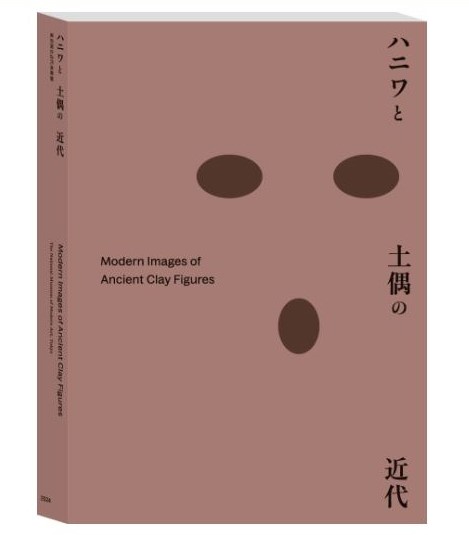
Installation images
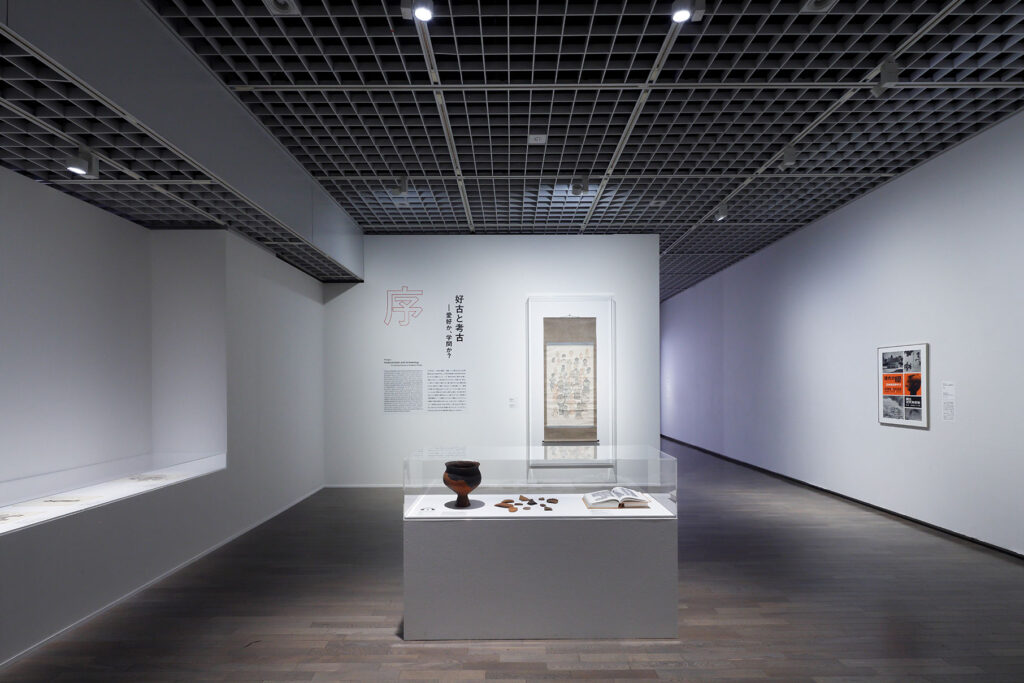
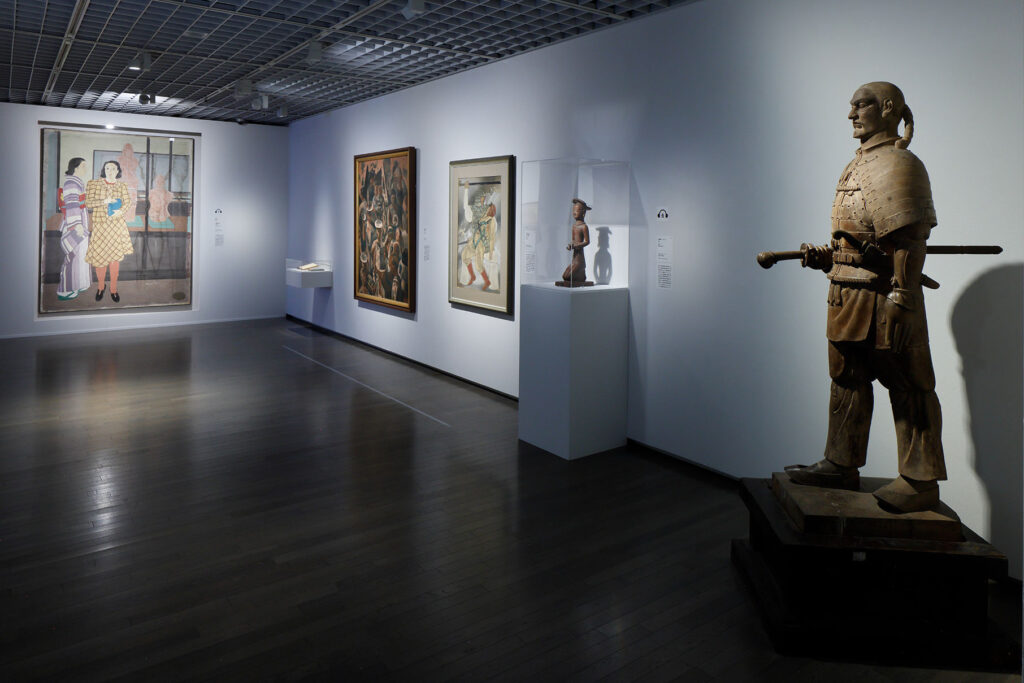
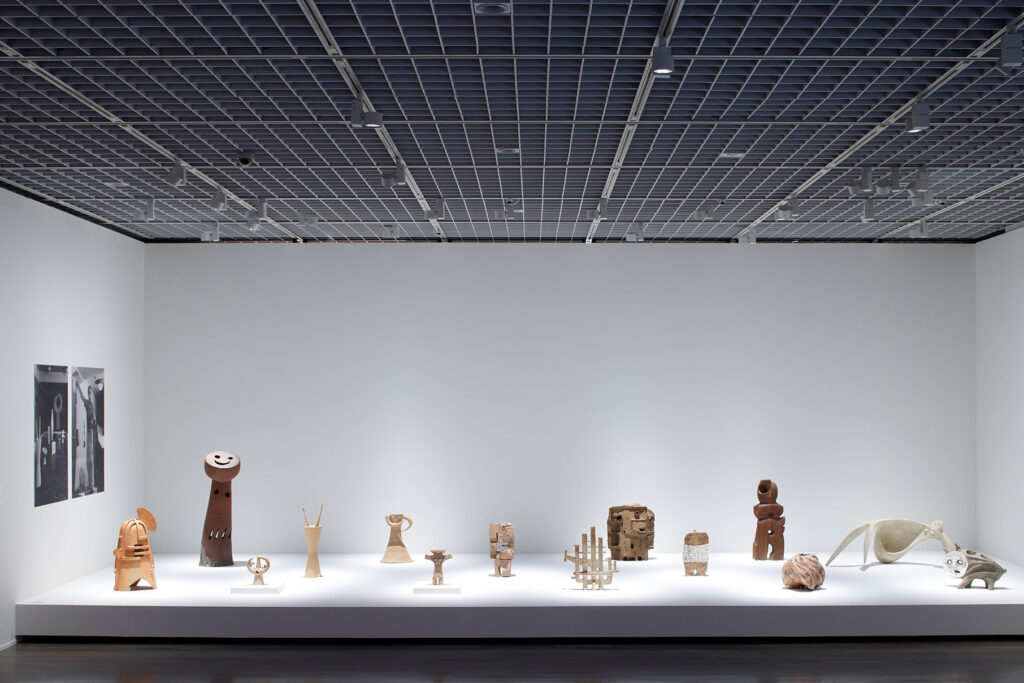
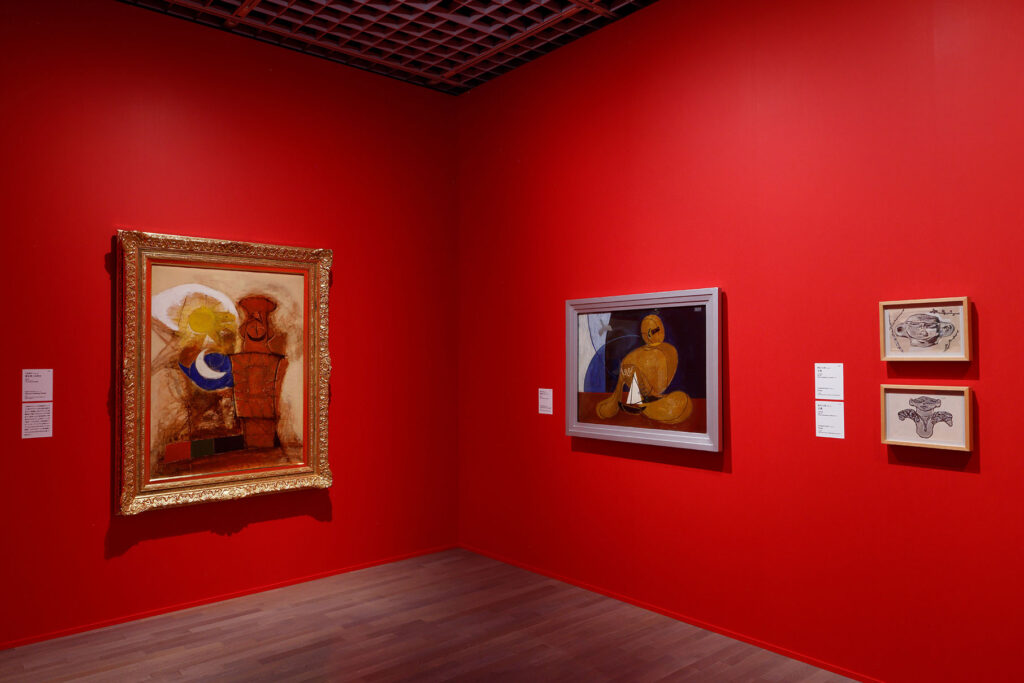
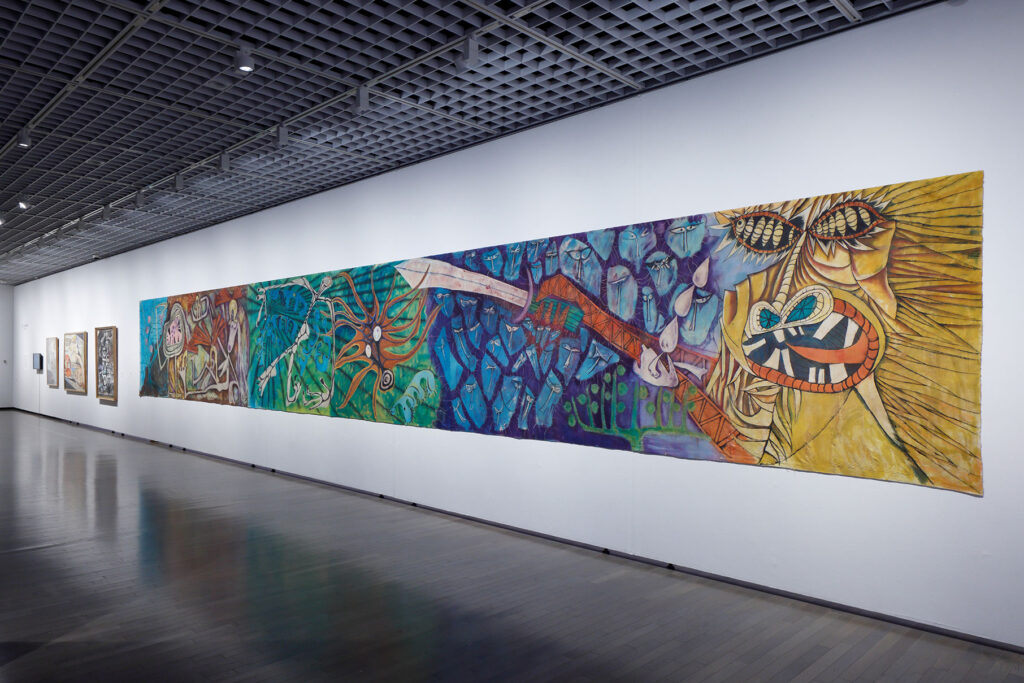
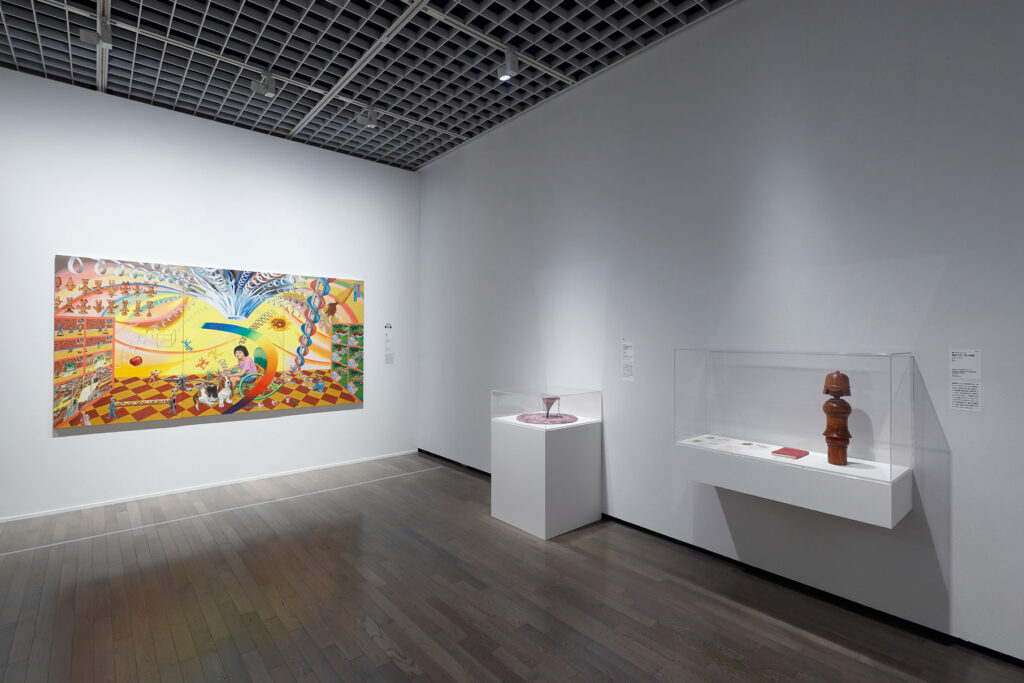
Hours & Admissions
- Location
-
Special Exhibition Gallery (1st floor)
- Date
-
October 1–December 22, 2024
- Closed
-
Mondays (except October 14 and November 4), October 15, November 5
- Time
-
10:00 a.m.–5:00 p.m. (Fridays and Saturdays open until 8:00 p.m.)
- Temporarily open on December 16 (10:00 a.m.–5:00 p.m.)
- Last admission: 30 minutes before closing.
- Admission
-
Adults ¥1,800 (¥1,600)
College/University students ¥1,200 (¥1,000)
High School students ¥700 (¥500)- All prices include tax.
- Admission in the parentheses is for advance tickets and groups of 20 persons or more.
- Admission is free for Junior High School students, under 15, and those with Disability Certificates and one caregiver accompanying each of them. Please present ID at the entrance.
- Including the admission fee for MOMAT Collection.
- Tickets
-
Advance tickets are on sale from August 1 to September 30 at e-tix online ticket service, and from September 3 to September 29 at the ticket counters.
- Organized by
-
The National Museum of Modern Art, Tokyo
NHK, NHK Promotions Inc., The Mainichi Newspapers - With the sponsorship of
-
East Japan Railway Company, MITSUMURA PRINTING Co., Ltd.


